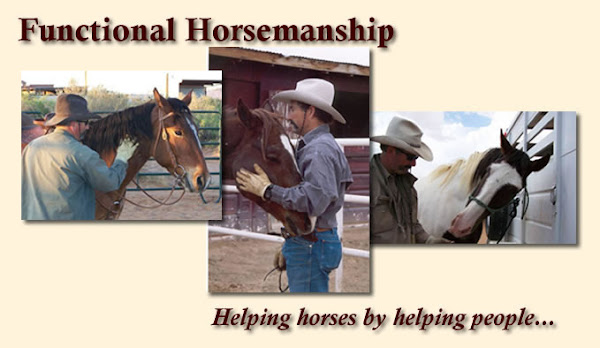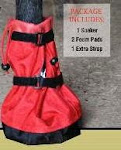Saturday, November 25, 2023
Comfort for Horses with Hoof or Tendon Problems on the Shoeing Stand
In a previous article I wrote about our 35 years old horse Charlie and his feed program due to age related problems not limited to his teeth and I briefly mentioned Charlie bowing both tendons on his front legs. g stout Quarterhorse who unfortunantly bowed both his tendons on his front legs a few years back. We have him on Equioxx pain meds daily and also gave him Devils Claw supplement which is a granular product containing Yucca, Devils Claw Root, Turmeric, Grape Seed extract and other ingredients. In the last six months I switched him over to Platinum Performance CJ (Complete Joint) which is really a great product and I have other horses on it as well. Charlie now moves pretty good, crossing over and under with the outside foot without giving. However, when on the shoeing stand for his trims every eight weeks or the ocassional grooming session, and the stand has hard rubber mats but he was still uncomfortably when a front foot or both front feet have to bear more weight. He trys to pull a foot away from time to time which is not helpful for horse and farrier relations and can even hurt my shoer. But it's understandable as Charlie has to deal with injury and age related pain. But we found a good solution.
So, after talking to a friend of mine who does equine therapy, and on her recommendation, I bought Physiopads from Wendy Murdoch. Wendy was known to me through articles in Eclectic Horseman magazine and she developed a system she calls the Sure Foot Equine Stability Program using a series of foam pads for horses to stand on. Readers will have to go to her website to understand what she is doing with this program. For my purposes I was mostly interested in Charlie's comfort and bought the Full Physiopads that my friend recommended.
When shoeing day came about we tried them on Charlie. I lifted each front foot and placed a pad underneath that foot then the other front foot. I envisioned a process of constant repositioning the pads but once I place his foot on the pad there it stayed. Charlie stayed on the pads and did not move or try to reposition his feet. Even when one of his front feet was off the ground where he had to bear additional weight on the other foot, he stayed rock solid still. I was impressed as was my shoer, who has probably seen every gimmick offered. And when Charlie was finished and asked to move off the shoeing stand, he did not exhibit any discomfort usually noticed on him giving a bit when a front foot was placed on the ground and weight transferred to that foot.
Thursday, November 16, 2023
Care of Feeding of Older Horse - Charlie's example
Recently we had a couple dozen people over for the annual Arena Challenge, some whom we have known for decades. They saw my wife's horse Charlie, a big (15.2 HH) stout sorrel Quarterhorse gelding with 3 white socks and a white stocking. That's him in the picture at right.
Some of our friends have been seeing him for years and years as my wife rode him in competitions, trail rides and even doing some western dressage. Invariably we were asked "Good Lord, Charlie's been around forever. Just how old is he now?" Well, Charlie is 35 years old. And despite bowing both front tendons a couple years ago, he is doing well. His teeth are all worn down and he is missing a molar or two, but he maintains his weight, and you can even call him heavy, as you can tell from the photo.
Due to his inability to chew long stem hay, it's a colic risk for him to swallow hay that hasn't been chewed fully, Charlie's main diet consists of pellets and alfalfa leaves. He gets fed five times a day and always has fresh, clean water, as should all horses. We really don't turn him out with other horses anymore as we don't want him to get ran around and stress him mentally and to limit stress on his already degraded front end. So anyway, this is his feeding program, and it has been working well for several years now. The pellets are measured dry prior to soaking.
Morning: 32 ounces of Standlee Timothy Grass pellets and 16 ounces of Standlee Alfalfa pellets, soaked in water. Some days he'll get an apple or carrot diced up small and mixed in.
Mid Morning: 32 ounces of Standlee Timothy Grass pellets soaked in water and about 1 1/2 to 2 1/2 pounds of alfalfa leaves. We spread these around several feeders so he keeps busy walking around to find the alfalfa leaves. If the alfalfa has small short stems, we'll feed that but try to limit his consumption of stems.
Mid Day: 32 ounces of Standlee Timothy Grass pellets soaked in water.
Mid Afternoon: Another 1 1/2 to 2 1/2 pounds of alfalfa leaves.
Evening: 32 ounces of Standlee Timothy Grass pellets and 16 ounces of Standlee Alfalfa pellets, soaked in water.
Supplements: About a year ago, I stopped giving him Devils Claw powder and started putting Charlie on a half daily dose of Platinum Performance Complete Joint (CJ) since I use this on a couple other using horses and have had great results.
Medications: For the last two years we have had Carlie on Equioxx daily pain and anti-inflammatory medications - just a small tablet dropper into his pellets which dissolves when the pellets are soaked. Lately, we have been giving him just a half of an Equioxx tablet on most days as we have concerns over years long use of pain meds. He also receives a dose of Pro-Bios once a week and additionally when the weather changes significantly.
Charlie is an intelligence horse, as most are, but he is special. He has learned to open gates that we have never seen other escape artist horses do, and when he escapes, he runs around our property like mountain lions are chasing him. We have took to chaining up his gates, but sometimes forget........as we do with leaving water hoses on. Sound familiar? We always cringe when he runs around at a full gallop as he'll be lame the next few days, but since we started him on Platinum Performance CJ, he doesn't get lame when he escapes, or when he throws a bucking fit in his paddock, nor does he show chronic front end lameness when he turns in a short radius. The only issue he has is with comfort is when standing for a period on time on the hard rubber padded shoeing or wash stand when being washed, groomed or trimmed. But we solved that problem using Wendy Murdoch's Sure Foot pads. I'll write a product review about those in the near future. We don't know just how long Charlie will be with us, but we do know that he'll be with us for the rest of his natural life. He has paid his dues to us, especially my wife, and we'll do what we can to help him be as mentally and physically sound as he can be.

Saturday, November 4, 2023
More on Horsemanship Knots - Practical use
In this year's annual Functional Horsemanship Arena Challenge for the first time I included the requirement to tie several knots for the Stockhorse division. I felt that anyone aspiring to be a good hand should know some useful basic knots. Thinking that most people can tie a square knot, I settled on the clove hitch, bowline and sheet bend. I didn't ambush competitors with these knots to tie as I view the annual challenge as more of a learning tool then some sort of test, so I sent out an e-mail a month before the Event letting competitors know they would be required to tie the three knots; wrote an article on this site with photos and a video to help them practice; and, I included knot tying practice in the couple of clinics I did prior to the Challenge. Feedback was positive on including knot tying with the exception of one rider who commented that he would have liked to see a hangman's knot, so they could hang me for making them tie knots.
During the clinics I did get asked on what use these knots were for. So, I went over common uses mainly for the clove hitch and the bowline. I believe that when teaching someone a skills, minor or major, it really helps to impart the how and why of the usefulness of those skills. However, for the purposes of the Challenge I pretty much concentrated on just how to tie the knots as opposed to why they are important and how they are used. I did do a couple of earlier videos prior to the Challenge, that I did not publish prior to the Challenge but which I am posting below, to help better explain the usefulness of the clove hitch and bowline knots.
The Bowline knot. In the video below I have tied a bowline in the end of a short piece of rope and dressed that knot down (tightened it up) so it was about the size and resemblance to a honda on a lariat. About 18-20 inches down the rope from the bowline (honda) I made an overhand knot in the rope so when I fed the other end of the rope through the bowline that overhand knot becomes a stop from the loop closes down - so it's a simple knotted neck rope much like you would do with a lariat if you were roping unhandled or green colts for the first time.
The Clove Hitch. In the video below I show how I secure the lead end of a mecate to the saddle horn using a clove hitch. It is useful when I am on the ground and not using the lead portion of the mecate such as free lunging my horse, putting him a pen or trailer for a short period of time. Anyway, I hope that these two functional uses of basic knots begin to illustrate the benefits of knowing how to tie these knots.

Subscribe to:
Posts (Atom)
















